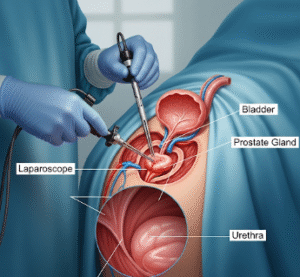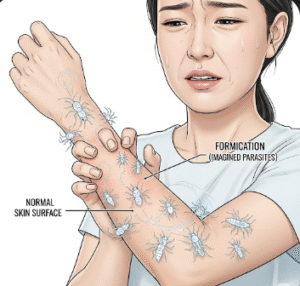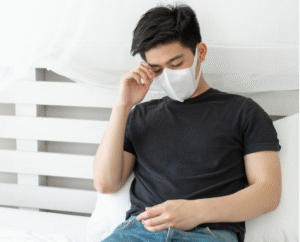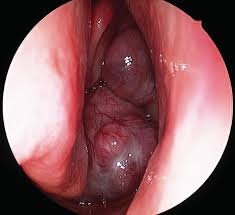Overview
Bell’s palsy is a sudden, temporary weakness or paralysis of the muscles on one side of the face, usually caused by inflammation or compression of the facial nerve (cranial nerve VII). This condition can cause drooping of the mouth, inability to close the eye, and changes in facial expression. While the exact cause is not always clear, viral infections — especially herpes simplex virus — are thought to be a major trigger. In Korea, Bell’s palsy is relatively common, and patients benefit from early diagnosis and effective treatments available at neurology and rehabilitation centers. With timely medical care, most people recover fully within weeks to months.
What is Bell’s Palsy?
Bell’s palsy is an acute peripheral facial nerve paralysis that typically develops suddenly, often overnight. It affects facial expressions, blinking, and sometimes taste sensation and tear or saliva production. Unlike a stroke, Bell’s palsy only involves the facial nerve and not other brain functions, although urgent evaluation is needed to rule out other causes.
Symptoms
Bell’s palsy symptoms usually peak within 48 hours and may include:
- Sudden weakness or complete paralysis on one side of the face
- Drooping of the mouth or eyelid
- Inability to smile, frown, or close the eye fully
- Drooling due to loss of mouth muscle control
- Changes in taste perception
- Increased sensitivity to sound (hyperacusis) on the affected side
- Pain around the jaw or behind the ear
- Dryness of the eye or mouth
Causes
The exact cause is unclear, but Bell’s palsy is strongly linked to viral infections that cause inflammation of the facial nerve, including:
- Herpes simplex virus (HSV-1) — most common
- Varicella-zoster virus (shingles)
- Epstein-Barr virus (mononucleosis)
- Cytomegalovirus
- Respiratory viral infections
The inflammation causes swelling of the facial nerve, which passes through a narrow bony canal, leading to pressure and disruption of nerve signals.
Risk Factors
Factors that may increase the risk of Bell’s palsy include:
- Recent viral infection (cold, flu, or ear infection)
- Pregnancy, especially in the third trimester or postpartum
- Diabetes
- High blood pressure
- Family history of Bell’s palsy
- Age between 15 and 60 years
Complications
While most people recover fully, complications can occur, especially if the paralysis is severe or treatment is delayed:
- Permanent facial weakness or asymmetry
- Abnormal facial movements (synkinesis) due to nerve miswiring during healing
- Eye damage from inability to close the eyelid, leading to dryness or corneal ulcers
- Chronic facial pain
Prevention
There is no guaranteed way to prevent Bell’s palsy, but you can reduce risk by:
- Maintaining a healthy immune system through good nutrition, sleep, and stress management
- Managing chronic health conditions like diabetes and hypertension
- Seeking early treatment for ear or viral infections
- Protecting yourself from cold wind exposure, which some studies suggest may trigger attacks in susceptible individuals
Treatment Options in Korea
Bell’s palsy treatment focuses on reducing nerve inflammation, protecting the eye, and promoting nerve recovery. Korean hospitals follow evidence-based guidelines and often combine Western medicine with supportive therapies such as acupuncture.
Diagnosis
- Medical history and physical examination
- Neurological assessment to rule out stroke or brain tumor
- Electromyography (EMG) to measure nerve activity
- MRI or CT scan if other causes are suspected
- Blood tests for diabetes, infections, or autoimmune disorders
Medications
- Corticosteroids (Prednisone) — started within 72 hours to reduce nerve swelling
- Antiviral drugs (Acyclovir or Valacyclovir) — may be added if a viral cause is suspected
- Pain relievers for discomfort
Eye Protection
- Lubricating eye drops and ointments to prevent dryness
- Eye patches or taping the eyelid shut during sleep to protect the cornea
Physical Therapy & Rehabilitation
- Facial muscle exercises to maintain muscle tone
- Electrical stimulation therapy in some cases
- Massage to reduce stiffness
Complementary Therapies in Korea
Some Korean clinics integrate acupuncture and moxibustion alongside conventional treatments to stimulate nerve recovery. These therapies are often provided in specialized rehabilitation hospitals.
Surgical Options
Surgery is rarely needed but may be considered if recovery does not occur after several months:
- Facial nerve decompression (controversial)
- Eyelid surgery to improve blinking and protect the eye
Prognosis
With early treatment, 70–90% of patients recover completely within three to six months. Recovery is faster and more complete in cases with mild to moderate weakness. Severe paralysis at onset may require longer rehabilitation.













